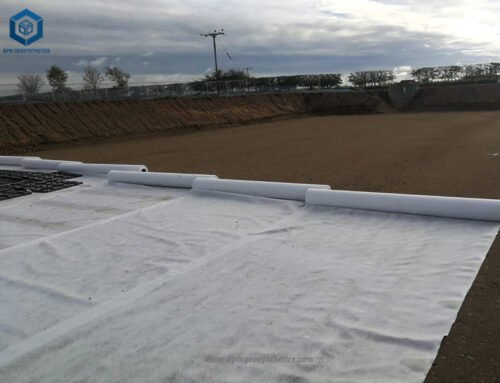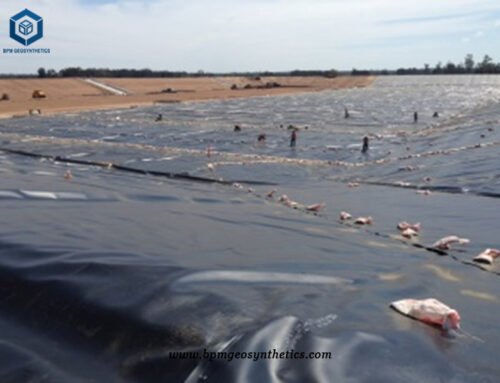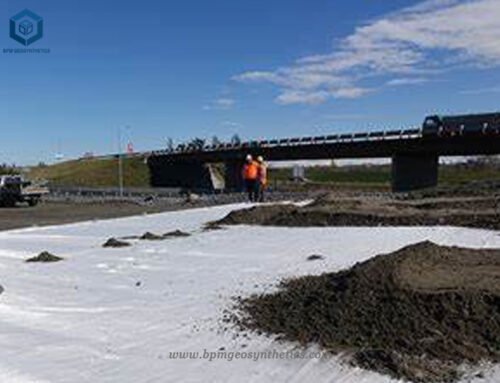Biaxial geogrids derive their name from their equal strength in both the machine and cross-machine directions. BPM Geosynthetics, a prominent geogrid manufacturer and supplier, offers biaxial geogrids that serve as reliable reinforcements for roadways and retaining walls. These warp knitting geogrids possess the unique property of maintaining their strength regardless of the direction in which they are rolled.
1. What Is Warp Knitted Biaxial Geogrid?
Warp knitted biaxial geogrid is a specialized type of geogrid used in civil engineering and construction projects. It is manufactured using high-strength industrial polyester or polypropylene filament fiber as the raw material. The production process involves warp knitting and directional structure composite weaving, resulting in a geogrid with exceptional mechanical properties and long-term strength stability.
Warp Knitted Biaxial Geogrid Features
One of the key features of warp knitted biaxial geogrid is its high tensile strength in both the longitudinal and transverse directions. The meridional fiber yarn in the geogrid possesses strong bonding points, enhancing its ability to withstand forces and maintain stability over time. Additionally, warp knitted biaxial geogrid exhibits a balanced distribution of vertical and horizontal strength, making it ideal for reinforcement applications.
The advantages of warp knitted biaxial geogrid are numerous. It offers small extension force, meaning it resists elongation under load, ensuring its effectiveness as a reinforcement material. The geogrid demonstrates remarkable tear resistance, allowing it to withstand high levels of stress and strain. It is also abrasion-resistant and corrosion-resistant, ensuring its long-term durability in various environmental conditions.
Warp knitted biaxial geogrid plays a crucial role in soil stabilization and reinforcement. By effectively locking soil or gravel particles within its mesh structure, it significantly enhances the shear ability and overall stability of the soil. This makes it a valuable solution for a wide range of applications, including road and railway projects, municipal infrastructure, and soft soil foundation treatment.
Warp Knitted Biaxial Geogrid Applications
In road construction, warp knitted biaxial geogrid is widely used for subgrade reinforcement, embankment stabilization, and erosion control. It helps distribute loads and reduces the potential for settlement, improving the structural integrity of the road. In railway projects, the geogrid provides stability to the track bed, preventing deformation and ensuring safe and smooth train operations.
Municipal infrastructure projects, such as retaining walls, slopes, and landfills, can benefit from the reinforcement properties of warp knitted biaxial geogrid. It enhances the strength of these structures, reduces soil erosion, and improves their overall performance and longevity.
The lightweight nature of warp knitted biaxial geogrid facilitates ease of installation and transportation, resulting in cost savings and increased efficiency during construction projects.
IWarp knitted biaxial geogrid is a versatile and reliable geosynthetic material that offers high tensile strength, tear resistance, and stability in both the longitudinal and transverse directions. Its application in civil engineering and construction projects contributes to enhanced soil stabilization, improved structural integrity, and long-term durability of infrastructure.
Warp knitted biaxial geogrid is widely used in road, railway, municipal and other road soft soil foundation treatment and subgrade, embankment and other engineering reinforcement and protection.
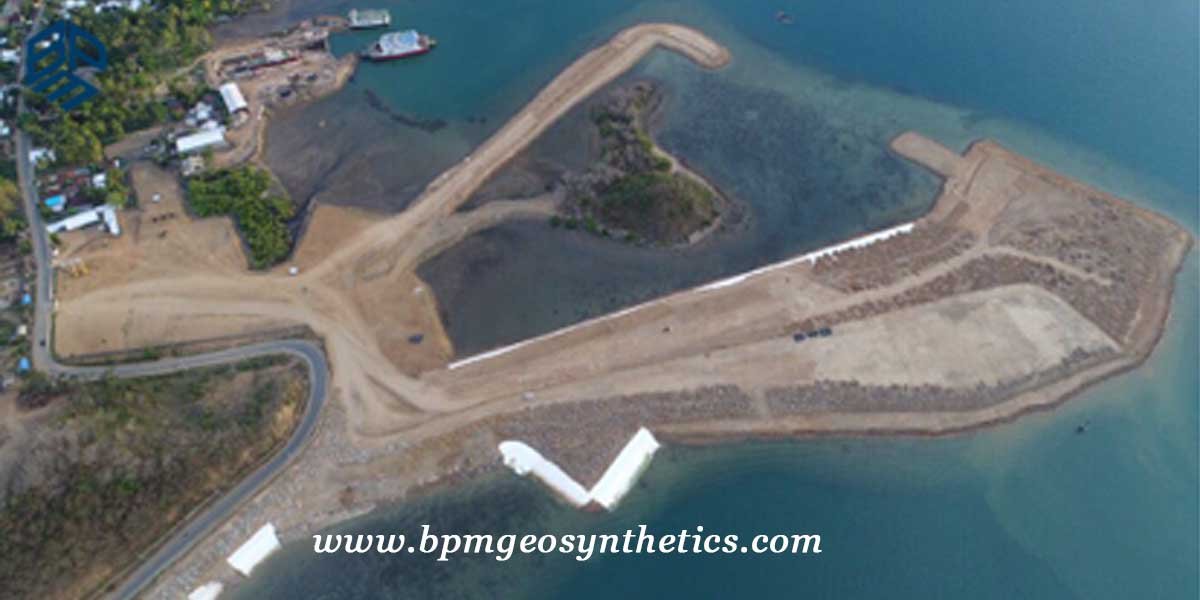
2. What Is The Purpose of Warp Knitted Biaxial Geogrid?
The purpose of warp knitted biaxial geogrid is to provide reinforcement and stabilization to soils and similar materials in civil engineering and construction projects. Geogrids are designed to address the inherent weakness of soils under tension by offering high tensile strength and the ability to distribute forces over a larger area of soil.
When soil experiences tensile forces, such as those caused by heavy loads or slope instability, it tends to pull apart and lose its structural integrity. Geogrids, with their superior tensile strength, act as a supportive layer within the soil, effectively transferring forces and reducing the risk of soil failure.
Warp knitted biaxial geogrids, in particular, are engineered to provide reinforcement in both the longitudinal (machine) and transverse (cross) directions. This biaxial capability ensures that the geogrid can distribute forces in multiple directions, enhancing its effectiveness in stabilizing the soil.
By incorporating warp knitted biaxial geogrids into construction projects, engineers can achieve several important objectives:
2.1 Reinforcement
The geogrids reinforce the soil, increasing its load-bearing capacity and reducing the potential for settlement or deformation. This is particularly beneficial in areas with weak or unstable soils.
2.2 Soil Stabilization
By restraining soil movement and preventing the development of cracks and fissures, warp knitted biaxial geogrids stabilize the soil and help maintain its integrity. This is crucial for structures such as retaining walls, slopes, and embankments.
2.3 Erosion Control
Geogrids prevent soil erosion by locking soil particles in place, thus protecting the topsoil and preventing sediment runoff. This is beneficial in applications such as erosion control blankets and vegetated slopes.
2.4 Improved Performance and Durability
By reinforcing the soil, warp knitted biaxial geogrids enhance the performance and longevity of infrastructure projects. They help minimize the risk of structural failure, settlement, and uneven subsidence over time.
2.5 Cost Savings
Geogrids can reduce the need for extensive excavation and the use of additional construction materials. By improving the stability and load-bearing capacity of the soil, they can optimize the design and reduce construction costs.
The purpose of warp knitted biaxial geogrid is to provide reliable and effective reinforcement to soils, improving their strength, stability, and performance. By mitigating the risks associated with soil failure, these geogrids contribute to the safe and long-lasting construction of various civil engineering projects.
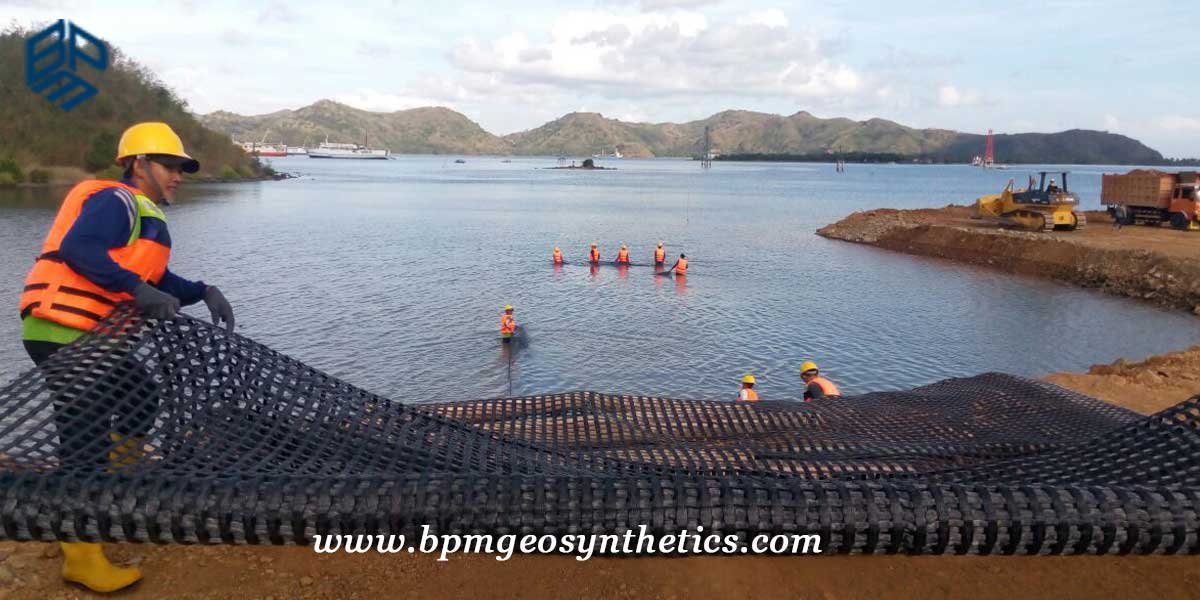
3. Case Study of Warp Knitted Biaxial Geogrid for Port Extension Project in Indonesia
The port extension project in Indonesia faced a significant challenge regarding the soft soil foundation. The traditional method of using a sand cushion and plastic drainage board was not sufficient to prevent uneven settlement and sliding movements under the heavy load on the upper part of the construction. To address this issue, the implementation of biaxial geogrid and filament nonwoven geotextile was proposed as a solution to increase friction, reinforce the subgrade, and stabilize the soft soil.
Our Indonesian customer participated in a bidding process for the port construction project. Recognizing the importance of addressing the soft soil foundation, our engineer suggested the utilization of biaxial geogrid and filament nonwoven geotextile products to enhance the bearing capacity and stability of the low load-bearing soils. To gain a better understanding of the proposed solution, the customer visited our professional geosynthetics factory and witnessed the advanced geogrid automatic production lines. During the visit, the customer obtained samples for third-party laboratory testing, ensuring the quality and performance of the materials.
Two months following the initial visit, the customer placed an order for 120,000 square meters of filament nonwoven geotextile and 90,000 square meters of HDPE biaxial geogrid. Simultaneously, the customer made the necessary deposit payment and confirmed the delivery schedule, including arrangements for a factory on-site inspection to ensure compliance with the specifications and quality standards.
4. Specifications of Biaxial Geogrid for Port Extension project
- Total quantity – 90,000 m2
- Two 40 HQ containers

About BPM Geosynthetics
BPM undertook the deployment and installation of biaxial geogrid and filament nonwoven geotextile for the Indonesia Port Extension project in July, 2018. Our customer was very satisfied with our products and our profession in the construction process. This becomes a symbol geosynthetic project in local market and also a big hit in making full use of land sources. Hope to be your partner.
BPM is not only manufacturing best quality geosynthetics products but also providing professional design and installation service. OEM and ODM are also available. If you have any questions or inquiries, please contact us, we will reply as soon as possible.


